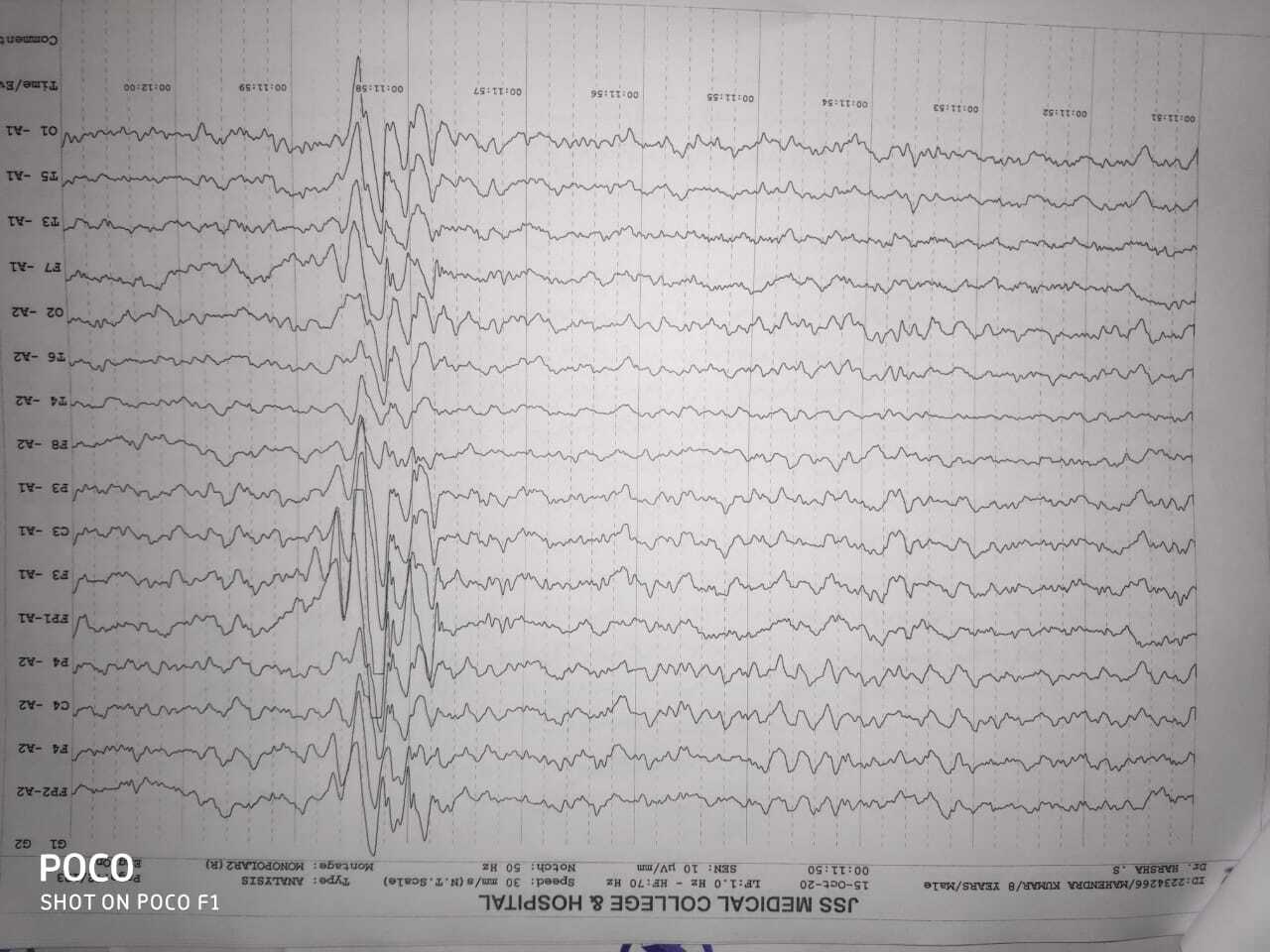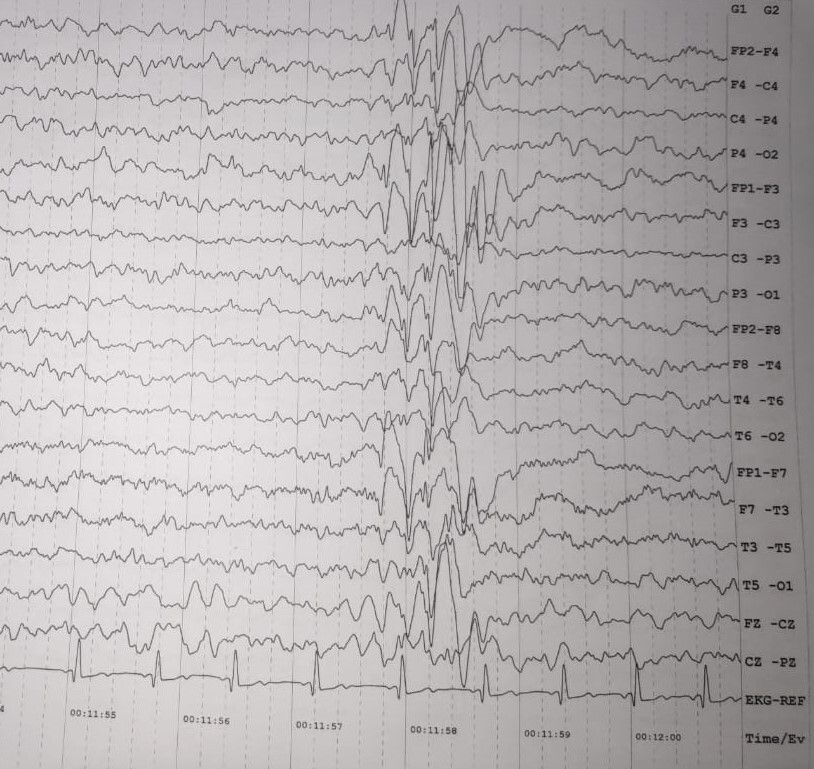Category: Tics/Stereotypies
Objective: To emphasize the association between seizures and a seemingly uncomplicated case of tics
Background:
Tics are a form hyperkinetic movement disorder , which predominantly occur in the paediatric population with a prevalence ranging around 3% 1.Despite being grouped under the group of hyperkinetic disorders , tics stand apart from the rest under this classification with respect to its clinical attributes . Unlike the other hyperkinesias , tics are typically preceded by a premonitory sensation known as the “premonitory urge2 and have a vast range of phenomenology 3,4
Method: Case report :A 8 year old boy born out of a non-consanguineous marriage with a normal perinatal and developmental history was brought to the hospital with complains of abnormal, repetitive movements of the face , neck and arms since 6 months . The movements were purposeless , repetitive involving the eyes ,mouth and shoulder. Clinical examination , routine blood work neuroimaging were normal.In view of history of concurrent , infrequent jerks an Electroencephalogram( EEG ) was performed . EEG done revealed bursts of frontally dominant generalized spike wave discharges ( figures 1,2).The child was started on valproic acid along with behavioral therapy .He is currently on follow up and frequency of the jerky movements have significantly reduced
Results: Tics are a set of hyperkinetic movements disorders , mainly seen in the pediatric population , which can be primary or secondary in nature 1. They are charecterized by several attributes which set them apart from the other hyperkinesias including a varying range of phenomenology 2,3 . The most common association of tics is with ADHD or OCD1,. The association between tics and seizures however are much rarer. Two large studies 5,6, found the prevalence of epilepsy to be 1.9 and 6 % of the study cohort respectively, emphasizing the rarity of epilepsy in uncomplicated tics . In our patient , the unique features include the absence of a learning disability or structural abnormality in the brain . The jerk like movements described by the mother were subtle and differentiating the two was a diagnostic challenge .
Conclusion: While it is common knowledge that tics are associated with learning disabilities and psychiatric disorders , the rarer association of epilepsy must also be kept in mind . Our case report ,highlights this uncommon association and drives home the importance of being vigilant when managing a case of seemingly uncomplicated tics .
References: References: 1. Knight T, Steeves T, Day L, Lowerison M, Jette N, Pringsheim T. Prevalence of tic disorders: a systematic review and meta‐analysis. Pediatr Neurol 2012;47:77–90. 2. Ganos C, Martino D, Pringsheim T. Tics in the Pediatric Population: Pragmatic Management. Mov Disord Clin Pract. 2017 Mar-Apr;4(2):160-172. doi: 10.1002/mdc3.12428. 3. Hallett M. Neurophysiology of tics. Adv Neurol 2001;85:237–244. 4. Jankovic J, Fahn S. The phenomenology of tics. Mov Disord 1986;1:17–26. 5. Mejia, Nicte I, & Jankovic, Joseph. (2005). Secondary tics and tourettism. Brazilian Journal of Psychiatry, 27(1), 11-17 6. Williams, David & Stern, Jeremy & Grabecki, Kathryn & Simmons, Helen & Robertson, Mary. (2013). Epilepsy in Tourette Syndrome. Journal of neurology, neurosurgery, and psychiatry. 84. x-e1. 10.1136/jnnp-2013-306103.31.
To cite this abstract in AMA style:
S. Paneyala. TICS WITH FITS [abstract]. Mov Disord. 2021; 36 (suppl 1). https://www.mdsabstracts.org/abstract/tics-with-fits/. Accessed December 6, 2025.« Back to MDS Virtual Congress 2021
MDS Abstracts - https://www.mdsabstracts.org/abstract/tics-with-fits/


